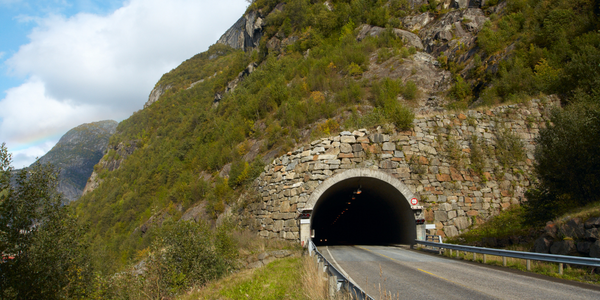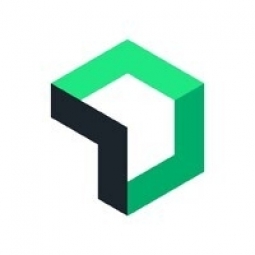Technology Category
- Platform as a Service (PaaS) - Application Development Platforms
Applicable Industries
- Cement
- Construction & Infrastructure
Use Cases
- Structural Health Monitoring
- Traffic Monitoring
About The Customer
Benevity is one of the largest corporate purpose software providers in the world, helping businesses power their social impact programs. The platform enables millions of users to make charitable donations, organize volunteer opportunities, and issue grants to nonprofits. To date, Benevity has facilitated more than 58 million volunteer hours and supported more than 418,000 non-profit organizations, raising over $12 billion dollars for charitable causes. The platform has also awarded 1.2 million grants worth $18 billion. Benevity's massive user base demonstrates the value it provides to its customers, and a growing commitment from businesses to give back to local communities.
The Challenge
Benevity, one of the world's largest corporate purpose software providers, faced a significant challenge in maintaining platform reliability amidst rapid growth. The platform, which facilitates charitable donations, volunteer opportunities, and grants to nonprofits, processes tens of thousands of donation transactions daily. The challenge was not just about adding new customers but also accommodating sudden shifts in demand, especially during the holiday season, a period of dramatically increased giving. An outage of just 20 minutes on a high-demand day like Giving Tuesday could result in thousands of lost donations and up to hundreds of thousands in lost dollars. Surges in donations and volunteering could also come unexpectedly in response to natural disasters or other major social movements. To keep pace with these surges, Benevity needed to take a proactive approach to its monitoring, aiming to reduce its mean time to detection (MTTD) and mean time to resolution (MTTR).
The Solution
Benevity turned to New Relic for end-to-end monitoring and incident management. New Relic provided Benevity with real-time data as a single source of truth across the entire technology stack, enabling both SRE engineers and DevOps teams to improve platform uptime and resilience and quickly alert to problems before they reach the customer. The team began with New Relic application performance monitoring (APM) and New Relic dashboards. These dashboards provided detailed visibility into key workflows and CPU usage, making it easier to accommodate sudden changes in demand or pressures on the system during peak times. Using New Relic Infrastructure monitoring with APM and New Relic alerts, the engineering teams were able to detect issues within minutes and connect data sources to find that needle in a haystack. Benevity also used New Relic to track MTTR, MTTD, and other software improvements, allowing the company to consistently refine its software and technology stack, leading to steady increases in productivity.
Operational Impact
Quantitative Benefit

Case Study missing?
Start adding your own!
Register with your work email and create a new case study profile for your business.
Related Case Studies.

Case Study
System 800xA at Indian Cement Plants
Chettinad Cement recognized that further efficiencies could be achieved in its cement manufacturing process. It looked to investing in comprehensive operational and control technologies to manage and derive productivity and energy efficiency gains from the assets on Line 2, their second plant in India.

Case Study
IoT System for Tunnel Construction
The Zenitaka Corporation ('Zenitaka') has two major business areas: its architectural business focuses on structures such as government buildings, office buildings, and commercial facilities, while its civil engineering business is targeted at structures such as tunnels, bridges and dams. Within these areas, there presented two issues that have always persisted in regard to the construction of mountain tunnels. These issues are 'improving safety" and "reducing energy consumption". Mountain tunnels construction requires a massive amount of electricity. This is because there are many kinds of electrical equipment being used day and night, including construction machinery, construction lighting, and ventilating fan. Despite this, the amount of power consumption is generally not tightly managed. In many cases, the exact amount of power consumption is only ascertained when the bill from the power company becomes available. Sometimes, corporations install demand-monitoring equipment to help curb the maximum power demanded. However, even in these cases, the devices only allow the total volume of power consumption to be ascertained, or they may issue warnings to prevent the contracted volume of power from being exceeded. In order to tackle the issue of reducing power consumption, it was first necessary to obtain an accurate breakdown of how much power was being used in each particular area. In other words, we needed to be able to visualize the amount of power being consumed. Safety, was also not being managed very rigorously. Even now, tunnel construction sites often use a 'name label' system for managing entry into the work site. Specifically, red labels with white reverse sides that bear the workers' names on both sides are displayed at the tunnel work site entrance. The workers themselves then flip the name label to the appropriate side when entering or exiting from the work site to indicate whether or not they are working inside the tunnel at any given time. If a worker forgets to flip his or her name label when entering or exiting from the tunnel, management cannot be performed effectively. In order to tackle the challenges mentioned above, Zenitaka decided to build a system that could improve the safety of tunnel construction as well as reduce the amount of power consumed. In other words, this new system would facilitate a clear picture of which workers were working in each location at the mountain tunnel construction site, as well as which processes were being carried out at those respective locations at any given time. The system would maintain the safety of all workers while also carefully controlling the electrical equipment to reduce unnecessary power consumption. Having decided on the concept, our next concern was whether there existed any kind of robust hardware that would not break down at the construction work site, that could move freely in response to changes in the working environment, and that could accurately detect workers and vehicles using radio frequency identification (RFID). Given that this system would involve many components that were new to Zenitaka, we decided to enlist the cooperation of E.I.Sol Co., Ltd. ('E.I.Sol') as our joint development partner, as they had provided us with a highly practical proposal.

Case Study
Splunk Partnership Ties Together Big Data & IoT Services
Splunk was faced with the need to meet emerging customer demands for interfacing IoT projects to its suite of services. The company required an IoT partner that would be able to easily and quickly integrate with its Splunk Enterprise platform, rather than allocating development resources and time to building out an IoT interface and application platform.

Case Study
Bridge monitoring in Hamburg Port
Kattwyk Bridge is used for both rail and road transport, and it has played an important role in the Port of Hamburg since 1973. However, the increasing pressure from traffic requires a monitoring solution. The goal of the project is to assess in real-time the bridge's status and dynamic responses to traffic and lift processes.

Case Study
Bellas Landscaping
Leading landscaping firm serving central Illinois streamlines operations with Samsara’s real-time fleet tracking solution: • 30+ vehicle fleet includes International Terrastar dump trucks and flatbeds, medium- and light-duty pickups from Ford and Chevrolet. Winter fleet includes of snow plows and salters.








